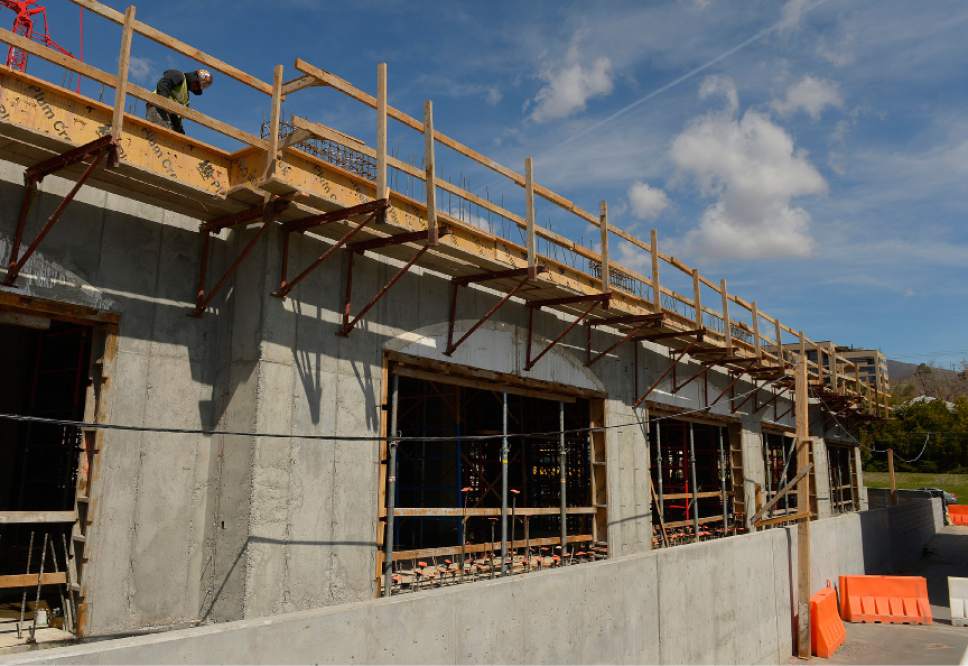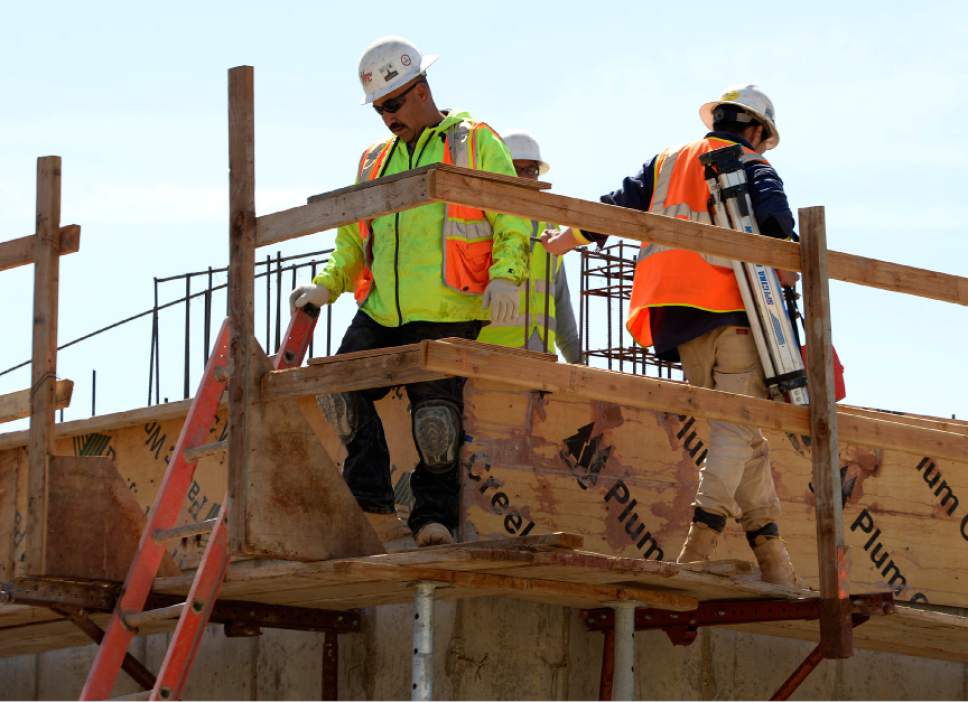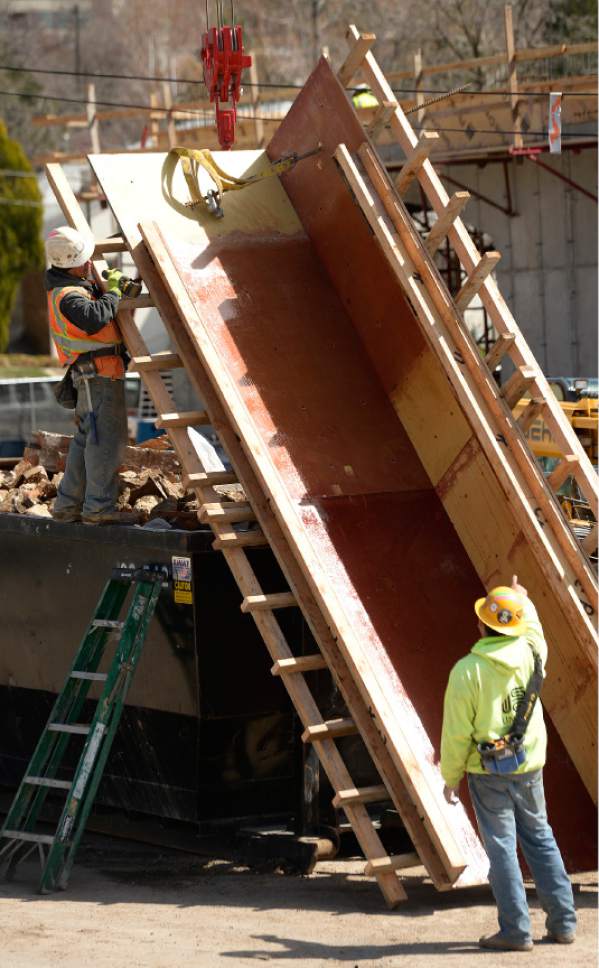This is an archived article that was published on sltrib.com in 2016, and information in the article may be outdated. It is provided only for personal research purposes and may not be reprinted.
Imagine an "affordable" housing project in upscale Federal Heights or Yalecrest neighborhoods.
That is not likely to happen. But it does illustrate Salt Lake City's' affordable-housing conundrum: where to locate new projects that offer rents for low-income residents.
The city's west side should not be the default location for all affordable housing, according to an ongoing conversation among City Council members. As other cities have learned, concentrating low-income groups is not a strategy that leads to healthy communities.
The converse, often voiced in City Hall, too, is that healthy neighborhoods offer housing for all income groups.
But, apparently, that is easier said than done. Recently the council approved by a split 4-3 vote a resolution that allowed construction of a project funded through the Housing Authority of Salt Lake County at 750 W. North Temple. The 80-unit complex, called the Bodhi Apartment Project, will offer 60 affordable units.
Council Chairman James Rogers, who represents west-side District 1, voted against it, saying the area already has its share of affordable housing.
"I have said that time and time again," he said. "What does that say to west-side residents?"
—
Pressure • East-side Councilwoman Erin Mendenhall also voted against the Bodhi Apartments. She agreed that concentrating low-income housing on the west side is not a good idea. But, she added, the city lacks criteria that would lead to better decision-making when locating such projects.
New affordable housing on the west side puts undue pressure on the already crowded school system, said Maria Garciaz, executive director of Neighborworks Salt Lake City.
The nonprofit focuses on preserving existing affordable housing. Garciaz contends that families with limited budgets should be able to choose where in the city they would like to reside, rather than being herded into one sector by economic factors.
Like Mendenhall, Garciaz said that if Salt Lake City does, in fact, want communities with mixed incomes, City Hall must decide how to distribute affordable housing.
In contrast, Lisa Adams, another east-side council member, said the Bodhi Apartment Project is not over-burdensome [for the west side]. "It's a solid project," she said. "I'm comfortable with it."
She noted that higher real estate prices in areas other than the west side make mixed-use housing a challenge. Nonetheless, Adams would like other cities in Salt Lake County to "step to the plate" on development of affordable housing.
Also in favor of the Bodhi project is Councilman Derek Kitchen — whose District 4 encompasses the city's inner core from Interstate 80 to the University of Utah.
"This is a mixed-income project that is located in central city," he said. "We have such a deficit in affordable housing, I just can't say no to this."
—
Not Enough • Although some council members believe there already is enough low-income housing on the west side, Sarah Munro, the director of University Neighborhood Partners, said some Glendale residents are moving as rents go up.
A small survey of 150 individuals in that west-side community revealed that about 40 percent relocated recently because they could not afford rent. Munro's organization — which focuses on education, employment and community building — tracks such things because when a family moves, it disrupts the education of the children.
"The reality is, there is not enough affordable housing in the city," Munro said. "Mixed income [projects] have been a positive way to approach it. But how many families have access to that, and how many don't?"
There are some east-side proposals in the works that will offer affordable housing. Among them is the 9th East Lofts, 68 units being built by the Salt Lake City Housing Authority in conjunction with the city Redevelopment Agency. At least 34 will be affordable units.
A project at the site of the old Salt Lake City Public Safety Building, 315 E. 200 South, will offer 28 affordable units. And at the old Wonder Bread site between 800 East and 700 East and between 400 South and 500 South, Cowboy Partners will develop a project to be called Liberty Blvd. It will have 54 affordable apartments.
The 171-unit Liberty Village in Sugar House, also a Cowboy Partners project, has 35 affordable units beginning at $569 per month for a studio, a one-bedroom at $607, and a two-bedroom at $725. To qualify, renters cannot earn more than 50 percent of the area median income (AMI).
Market rates for those Liberty Village units are $907, $907, and $1,399, respectively.
—
What's 'affordable'? • It is difficult to pin down exactly what "affordable" housing is. Families who pay more than 30 percent of their income for housing are considered "cost-burdened," and may have difficulty affording such things as food, clothing, transportation and medical care, according to the federal Department of Housing and Urban Development (HUD).
An analysis released last fall based on U.S. census data found that 25.6 percent of Salt Lake City's tenants pay 30 percent to 50 percent of their net income on monthly rent, making them "moderately cost-burdened."
Another 23.1 percent are "severely cost-burdened," meaning they spend more than half their earnings on rent, according to the study by the online listing service ApartmentList.
Nationally, an estimated 12 million renters and homeowners pay more than 50 percent of their annual incomes for housing, according to HUD. A family with one full-time worker earning the minimum wage cannot afford local fair-market rents for a two-bedroom apartment anywhere in the United States.











